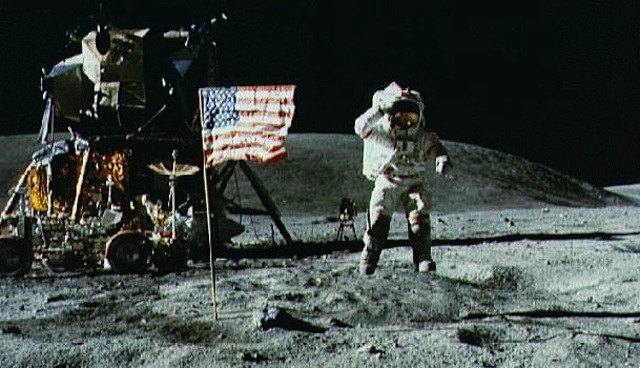The title or name of the artifact: Astronaut John Young leaps from lunar surface to salute flag
The name of the person or company that designed it : Astronaut Charles M. Duke Jr. of NASA
its materials: photo
its dimensions:640cm*368cm
its date of creation or production:20 April 1971
Three questions :
1. How many difficulty was NASA face when they decided load on the moon
2. How Neil Armstrong walk on the moon change people life.
3. The impact of NASA’s success on the moon landing on the world.
Work cite
Astronaut Charles M. Duke Jr. of NASA NASA image and video Library Astronaut John Young leaps from lunar surface to salute flag. https://images.nasa.gov/details-as16-113-18339.html (14 September 2018)
Requirements
-
Include a title that references what you are analyzing and your “take” on it.
-
A thesis that answers the question, “so what?”
-
Include references to at least two images and two texts. They do not need to be same sources you discussed in your object file.
-
Cite your sources. It is imperative to acknowledge your sources because it locates you within an interpretive community.
-
Follow the “Practical Grammatical Tips for Academic Prose” printed below.
Reminders
-
We will not accept the rough draft unless you have submitted description, formal analysis, and object file.
-
While not graded, the rough draft is required for your paper to be considered complete. In other words, we will not accept your final paper if you have not handed in, and received comments on, a rough draft.
-
Comments and suggestions for improvement will be predicated on the evaluation criteria printed below.
Evaluation Criteria: Papers will be evaluated with the following considerations in mind:
-
Point: Does the paper make a point? Is it carefully and clearly stated? Is it significant? Is it interesting and engaging for the reader? Does it take a stand and make an argument?
-
Structure: Is the paper well structured: does it include an introduction with a thesis? Paragraphs that build a coherent and consistent argument? A conclusion that ties together the different ideas and themes? Are the individual paragraphs well structured, breaking points down into logical sub-points? Do they include a topic sentence that connects the theme of the paragraph to the other paragraphs and the thesis of the paper?
-
Argument and Evidence: Are the interpretive points of the argument fully discussed and well supported? Are there visual observations or texts that support the argument? Is the evidence well chosen and appropriate? Does the discussion make the point clear with explanation and example where necessary, and explore the full implications of the claim being made?
-
Overall Depth of Thought: How well does the paper succeed at going beyond the surface of the text to notice and bring out underlying issues, particularly in a way that shows how the text/image/building might have something to say about our contemporary concerns? Does the paper wrestle with the complexities of the object and problems in interpretation?
Hints
Select your evidence carefully; the sources you choose determine the argument you make.
Use the “Tools of Analysis” discussed in section to interpret your object:
-
Description
-
Formal Analysis
-
Iconography
-
Media History
-
Cultural Context
-
Lives of Objects
Rely on a variety of strategies to support your argument. For example:
-
Use formal analysis to support your point.
-
Compare and contrast one artifact with another.
-
Compare and contrast an artifact and a document.
-
Cite a primary source document and explain its relationship to your point.
-
Reference a secondary source and explain its relationship to your point.
Practical Grammatical Tips for Academic Prose
Avoid colloquialisms (“you know”) and contractions (“is not” as opposed to “isn’t”)
Try to avoid the passive voice, a form a sentence construction in which the one performing the action IS NOT the subject of the sentence.
Passive constructions are easy to spot; look for a form of "to be" (is, are, am, was, were, has been, have been, had been, will be, will have been, being) followed by a past participle (a form of the verb often, but not always, ending in "-ed”). For example, replace “The old building has been torn down” with “The building commission tore down the old building.”
Do not confuse possessive, plural, or contracted forms, especially of pronouns. Remember, for example, that “it’s” equals “it is.”
Avoid beginning sentences with “and” or “but.”
You can use the first person; however, use it sparingly. The reader knows you are speaking, so employ it for emphasis. Writing “I think” and “I believe” too many times weakens your argument.
PROOF READ your paper in order to catch missing or misspelled words, as well as the words spell-check does not identify or changes inappropriately. Some suggestions: read it aloud, read it backwards, or change the font.
注:本栏目重在收集一些海外留学文书的题目,以便加加留学编辑深入了解海外教育方式与发展形势,从而拓展个人陈述、推荐信等文书的写作思路。
